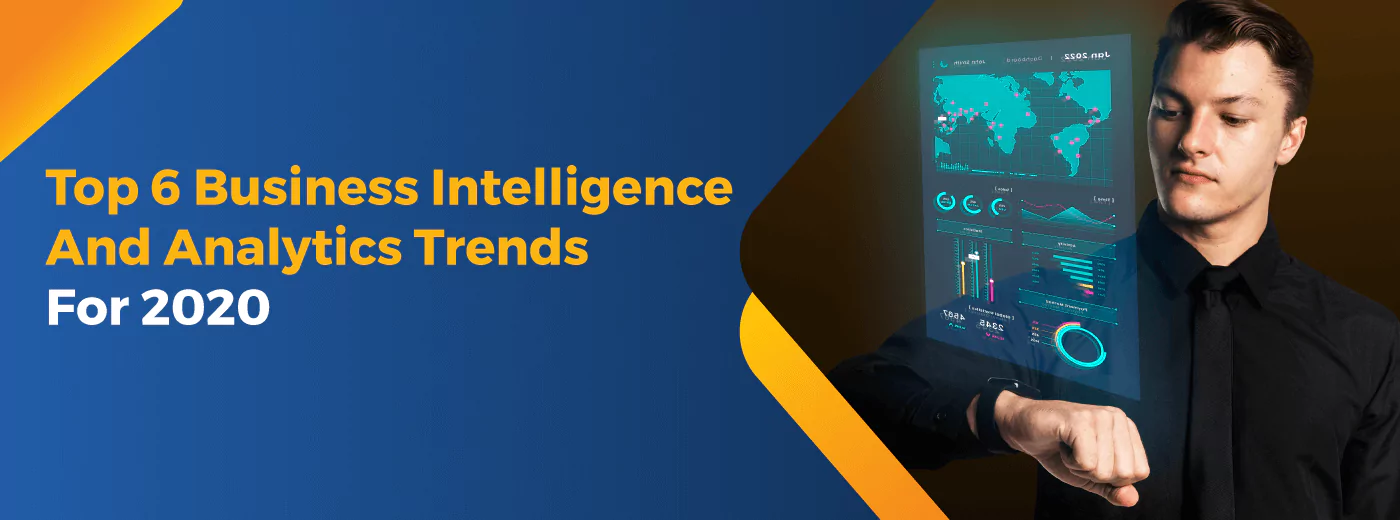
Sign up to receive latest insights & updates in technology, AI & data analytics, data science, & innovations from Polestar Analytics.
This last decade has been the one where people realised the real value of data. It is where data went ‘Big’ so much that in the last 2 years, we have generated 90% of all the data that we see today.
The following estimates and trends suggest this is just a beginning:
Adoption of mobile devices across all strata and release of data in the forms of images, videos and social media interactions
With the growing usage of sensors & surveillance devices, it is going to expand even more. As per IDC estimates, 41.6 billion connected IoT devices will exist and would generate 79.4 zettabytes (ZB) of data by 2025
Digitization of all form of data, earlier it was in other physical formats and adoption of cloud platform
Keeping things into perspective – earlier, they had to rely on an MIS team or an analyst for this fact-checking exercise now, we can say that – BI and analytics platforms have truly been democratized.
Now the question for the next decade is – With the wave of digital transformation catching up, how BI & analytics will transform? What can we expect more from BI platforms in 2020?
To understand this, the Business Application Research Centre conducted a survey over nearly 2,900 BI experts (users, consultants and vendors) for their views on the most important BI trends and this is what they found:
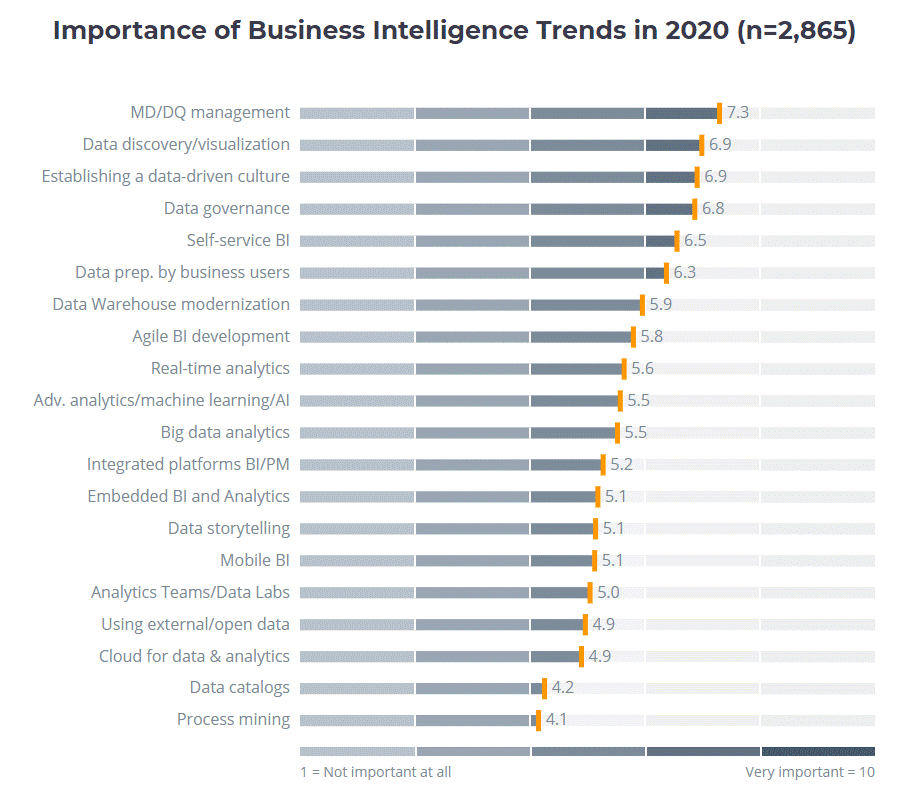
Source: Business Application Research Centre
The study is indicative of the fact that the majority of analysts and BI users want a more qualitative and collaborative analytics culture. In line with this thought, now we are going to present our pick of ‘Top 6 BI Trends for 2020.
The first trend that we are going to talk about is a combination of Human capabilities with machine intelligence – Augmented Analytics. This is going to drive the analytics space in the years to come. People have started realising the power technology like ML, NLP & AI brings to the table and as per IDC’s Worldwide semi-annual Cognitive and Artificial Intelligence Systems Spending Guide, the world spending on AI systems will double the current spending to climb up to $77.6 billion by 2022.
Even though, there is some scepticism that surrounds AI implementations, with the deluge of data that the organisations are subjected to – they are going to need technologies like machine learning and AI to expedite the process of uncovering key trends and generating predictions.
But this is not all, at least for now organisations need human intellect to put these insights into practical use. That is why an augmented approach is needed.
Augmented analytics promises to deliver on some significant challenge that companies face today, primarily – ‘User Adoption’. With augmented analytics business users can find actionable insights in a fraction of time it earlier used to take, with little dependence on business analysts or data scientists. This is going to provide a big boost to the usability & friendliness of BI & Analytics platforms amongst users of all departments and impact the ROI of these investments.
With everything around us speeding up, it is very natural for organisations to adapt to a pre-loaded analytics solution that caters to the need of one or more departments. Analytics project implementation takes a humongous amount of due diligence in terms of scheduling downtimes of existing systems to forming a cadre to rolling it out in phases. It’s hard to get it right in one go, that’s why companies invest a considerable amount of time while formulating the right analytics strategy.
A pre-packaged application that is tried & tested and guarantees the desired outcome without all the hassles & uncertainty, holds great value for agile organisations of today.
A fast-growing start-up wanted a constant check on its financials and chose to provide its department heads a birds-eye-view of their performance but, they neither wanted to invest a lot of time nor capital in an analytics system. They procured CFO Cockpit – our ready-to-use analytics solution that served all their needs without any worries of procurement or maintenance.
The Business Application Research Centre already highlighted the importance of good data discovery/visualisation. A right analytics dashboard leads to greater adoption due to increased usability and lesser time to insight. Also, it extends the promises of a truly self-service BI tool by eliminating the cumbersome filtering and need of assistance to arrive at the insights for the decision-makers.
As per Gestalt theory, these 6 principles to visualisation can enhance the ability to extract meaningful information from the visual displays.
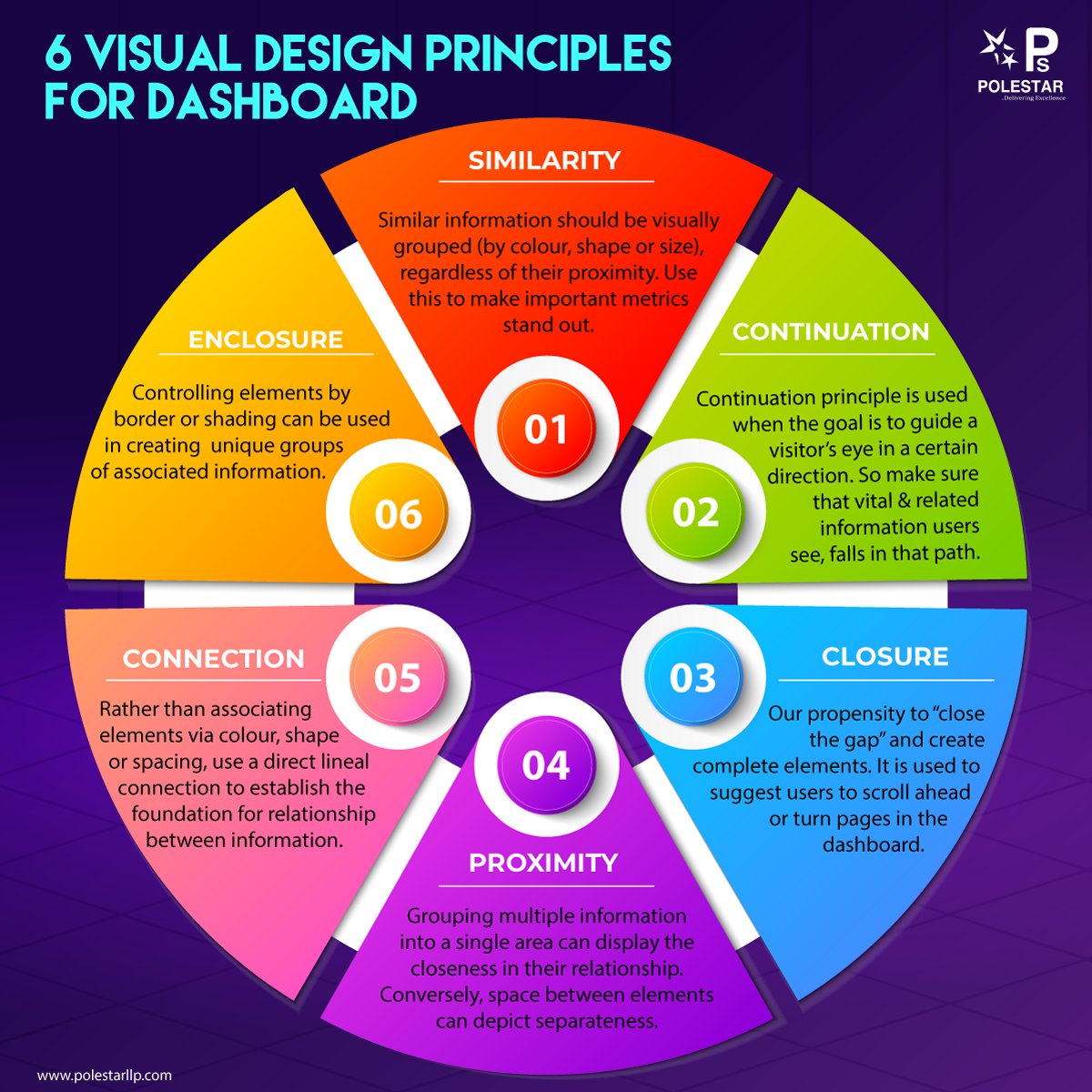
Ingrained human behaviour enables us to quickly understand & retain information presented visually. The primary aim of a BI platform is to deliver information in a digestible form and there is no better way than a well-structured and designed dashboard. Some other factors to consider while creating a dashboard are:
Optimized for Personas – who will be using the dashboard
Identifying the KPIs – the first screen shows the major ones
Avoid information overload – might lead to complexities for end-user
Enable real-time data – auto-refresh to present the exact information
Minimal reload-time – to hold the users’ attention
With the usability and adoption being a big challenge with BI & analytics projects, analytics chatbots that provide the answer to user conversational queries possess great potential in this regard. These bots are machine-learning enabled and with more interactions, it trains itself and continues to learn with every passing interaction and offers better insights with lesser efforts. Apart from enabling users, it boosts collaboration as well through communities and groups formation which notifies users and leads to better efficiency.
A BI system requires decision-makers to set filters, drill through dashboards and then get actionable information, any step missed could lead to a potentially bad business decision. A chatbot offers a safe and secure remedy for such incidents.
An analytics chatbot like – Chaplin AI – bring information to the users. It offers benefits like integration with an application of your familiarity (apps), processes natural language queries seamlessly, mobile app integration and a robust and secure environment.
Another trend that we expect to be adopted further in 2020, is the integration of analytics capability in users’ natural workflow, which is precisely what embedded analytics does. It eliminates the need for users to toggle across different screens to access analysis or performance reports. It even makes it easier to grab decision-makers attention by popping alerts and notifying for certain KPI-led results.
Teams getting dispersed across geographies, growing acceptance of remote work and increasing adoption of cloud has already set the platform for embedded analytics. The potential that embedded analytics offers is huge in terms of enabling the decision-making, reducing cost and increasing the user/customer satisfaction.
In line with this trend, we have seen SaaS offerings with embedded intelligence and 2020 is expected to bring us further on this journey. This image comprehensively sums up how the importance of BI will emerge to be the need of every application and hence a key feature to users’ native environment:
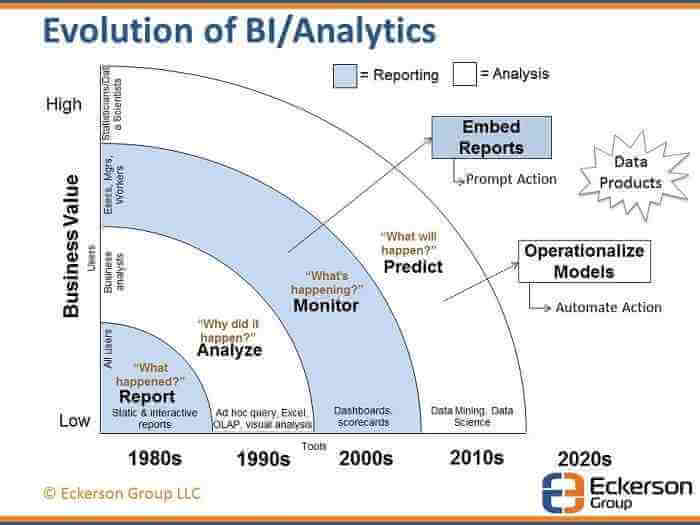
Source: Eckerson Group
“Gartner Says More Than 40 Percent of Data Science Tasks Will Be Automated by 2020”
Business executives understand the importance of data-based decision-making. The last decade has clarified its need across organisations ever more so, the next decade promises to consolidate on these advancements made. Automation would be a setting stone for companies switching to next gear of technological advancements. We will see data scientist focusing more on enabling ML & AI capabilities.
Automating activities for collecting data from disparate systems, analysing it and generating reports through BI platforms would ultimately unlock the self-service capabilities for business users.
A culture of data-driven decision-making:
We have been talking about its importance for at least the last two decades, now it is a pre-requisite for every organisation. We hope in the next few years, BI would pave the way to more mature business strategies and businesses would create maximum value for all the stakeholders involved.
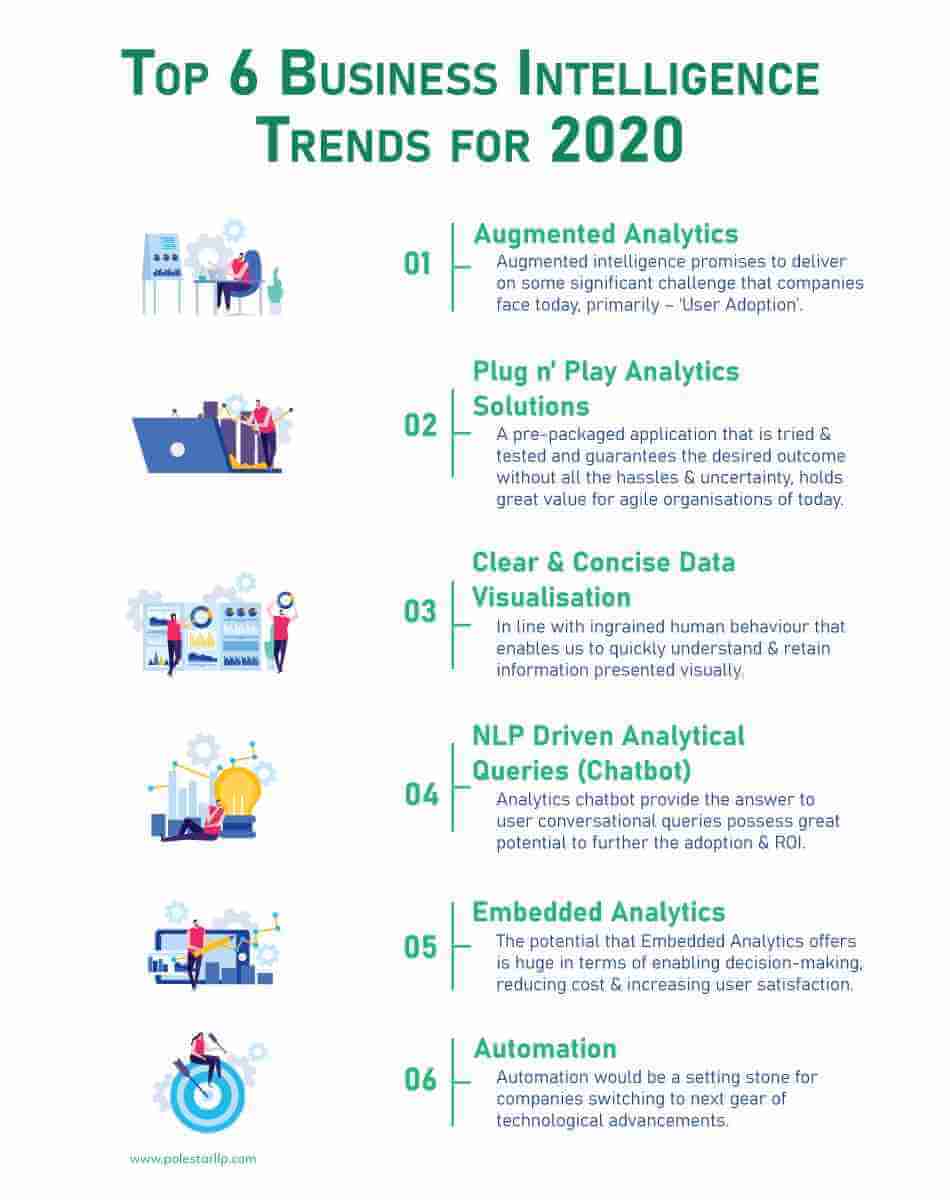
If you liked this blog, you might like our Latest Whitepaper as well. Get Your Free Copy Now.

About Author

Assistant Vice President
You can't hire somebody else to do your pushups for you.